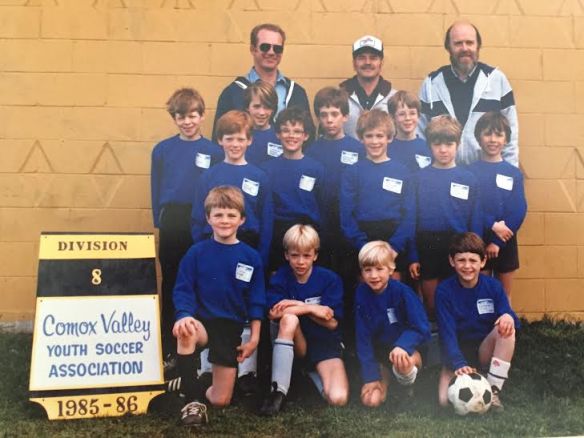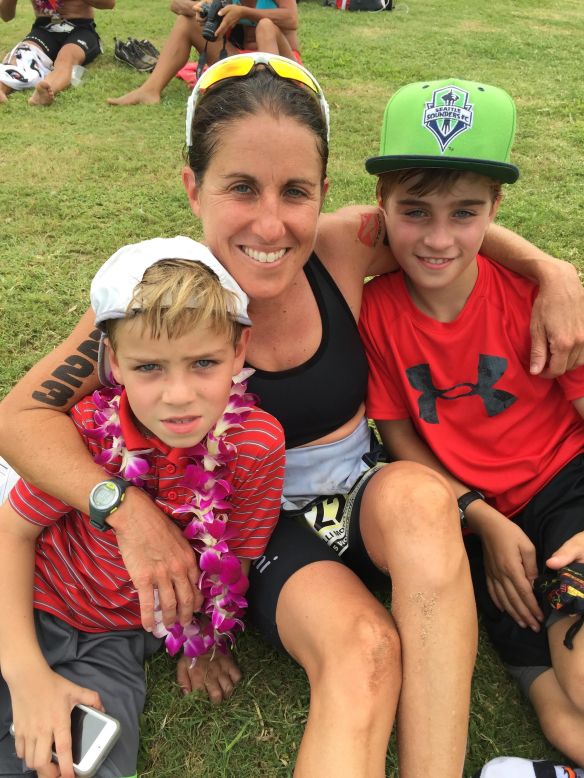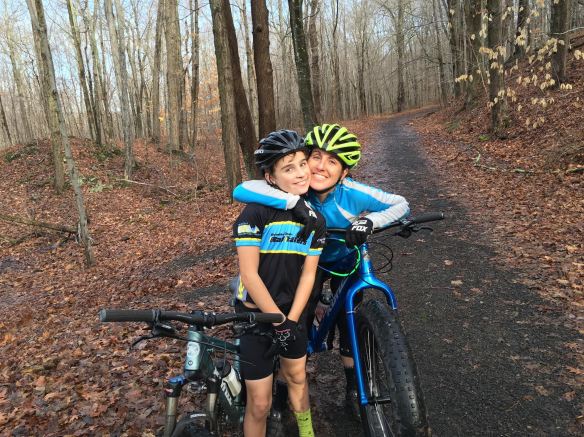Meet Karen DeWolfe, a mother of three of Corvallis, Oregon. I met Karen in my Canada Cup mountain bike racing days and I still remember how fast she could fly down the hills. I wanted her fearless speed! More recently I have admired from afar how she has started a momthletes group to get moms together to exercise, get fit, connect and have fun! Since I’ve been wanted to learn more about what she does I asked her for an interview to tell us more. Read on for more on the story of momletes, Karen’s vision, goals, and how she and other moms work together to overcome the challenges of getting out for exercise. A great read full of so many tips and great resources!!
(Note: these great photos are courtesy of www.becerraphotography.com and to learn more about momthletes visit: www.momthletes.com)

- Tell me more about your athletic background and how has it evolved since starting a family?
I grew up in Nova Scotia (eastern Canada) and my Grandfather, my father and uncles were always getting us to do fun little challenges, like diving off cliffs, playground obstacle courses, and all sorts of fun adventures. They really taught me a tremendous amount about overcoming fears and most importantly they knew how to make exercise really fun. My family enjoyed the outdoors together, camping, canoeing and hiking. We all loved riding bikes. We rode everywhere – the candy store, swimming holes, friend’s houses and to town. Being able to ride bikes was freedom. I also ran cross country, did gymnastics, and downhill skied.
In middle school I discovered mountain biking and I loved it. I did my first bike race when I was 16 thanks to a wonderful mentor who taught me and hundreds of people in Nova Scotia how to ride bikes over the years. Then I found another amazing bike community while studying Forestry at the University of New Brunswick. This lead me to my now husband, Matt Betts who helped me take racing to a whole new level. Within two years of meeting him, I was racing Canadian Nationals. The Fredericton bike community included a number of amazing mountain bikers including Peter Wedge, Anna Healy, Eric Goss, Matt Hadley, Geoff and Catherine Pendrel. The Radical Edge bike shop had a huge part in bringing us all together.
I raced mountain bikes at the elite level for much of my twenties. When I was 26 I had my first baby. I did my first local race 5 weeks after my daughter was born and was racing world cups within 9 months. I also started racing Xterra and was loving that too. Then my daughter suddenly became ill and required hospitalization, blood transfusions and tests. She got better but it took 2 months for her to fully recover. That ended my first season of racing as a mother. My son also had a scary start to life, not breathing for the first 5 minutes of his life. It was unclear if he was going to survive, and if he did survive if he would have brain damage. He made a full recovery. These two early experiences helped me decide to focus my time primarily on my children.
The first few years with children were hard for me as I had to let a lot of things change. There were days when I felt like I was failing as an athlete and a mother and days when I felt I was doing great. I ran more and biked less. I played with my kids a lot and taught them how to ride everywhere – to the library, preschool, to the candy store. I still did some mountain bike racing locally and had fun trying some new challenges; 50 – 100 mile mountain bike races, some Xterra events, and my first longer running races, 15-50km distances.
As a family we went hiking and backpacking all over Oregon and travelled to Costa Rica to learn about their father’s amazing world of forest ecology, hummingbirds and flowers. It has been a great life but allowing the athlete in me to change was very difficult.
My oldest daughter is Ava Betts (11) – she hiked a 10,000 volcano with her friends for her 10th birthday last year.
My son is Miles Betts (8)– he is a limit pusher. He could ride his bike 6 miles when he was 3.5. He has a lot of energy.
My youngest is Anna Betts (5) – She is pure sweetness. She is kind and loving and rides her bike a mile to school and back everyday chatting happily most of the time.
2. You’ve started Momthletes, which is devoted to helping mothers fit exercise into their lives. How did the idea for Momthletes come about?
I had a long standing Thursday Playgroup with a group of women I call my Pro Moms, because they are completely dedicated to their children. Playgroup was a place where our kids could all play together and us Moms could talk about anything we needed to. When it was time to put my youngest in school, my Playgroup Moms asked me what I was going to do with my new found time. They suggested I help other mothers figure out how to stay fit. They had watched me fit exercise into my life in a “by any means necessary” way over 10 years – running to preschool, biking to playgroup, running to the grocery store, doing intervals with napping babies in the chariot. They suggested other people would want to learn about how I integrated my life as an athlete and a mother. And thus Momthletes was born.
I started with my Playgroup Moms, showing them my ball workout that I use almost exclusively for strength training, and I gave a few women workout programs. We also started the Momthletes Facebook page so we could share our victories and strategies with one another. Then I met another Mom friend out running one day. She told me she wished she could just go for long adventurous runs some day. I told her I was planning on starting a Momthletes class and she said she would be there and would tell others. That began the Momthletes Basic Workout which we are still doing today. We start with body strength exercises on the playground, then run or hike straight up an 800 foot hill and then sit in silence for 3-5 minutes at the top of the hill overlooking our city. We then walk back down and talk about whatever we need to. That wonderful Mother I met running that day can now run a half marathon at the drop of a hat, is raising three beautiful children and is completing her master degree in education.
Now I offer different programs – personal training, mountain bike lessons, and different running classes. I help women organize their homes to make more time and space for exercise, define their goals for exercise and life and create work out schedules that support those goals. I help women pick out the appropriate equipment for the exercise they are interested. I also direct them to physical therapist and message therapists if there are issues I think they need help with. Momthletes Classes bring together a community of women who are dedicated to helping each other reach their goals in exercise and life. There are a variety of prices and ways to get involved and I am still planning new programs to meet the many needs mothers have.
 3. What does a typical week of workouts with momthletes look like?
3. What does a typical week of workouts with momthletes look like?
Summer Schedule example:
Monday 6am – Momthletes Basic Training Workout
Monday 9am – Run with Ease (how to make running easier)
Tuesday – Personal Sessions
Wednesday 6am – Trail Running Techniques (how to make hard terrain easier)
Wednesday 9am – Grampy John Family Adventure Day – bike/hike adventures with kids
Friday 6am – Trail Run – 5 miles at a talking pace.
The schedule changes depending on the season. All the workouts are outside. This winter we met every Monday and Friday at 6 am and trail ran in the dark with headlamps and often in the rain. It was not large group but the women who did it reported feeling less seasonal effects and left every workout feeling tough and happy and ready to take on anything, and they do!
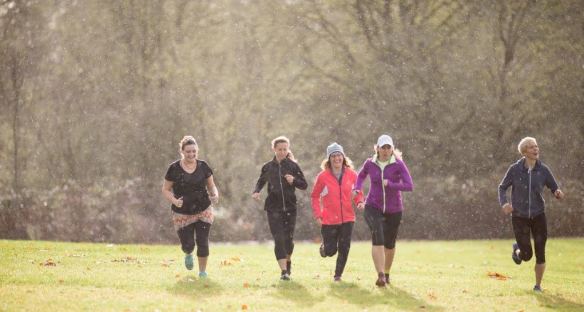 4. In your experience what are the biggest challenges moms have for fitting exercise into their lives?
4. In your experience what are the biggest challenges moms have for fitting exercise into their lives?
- Finding the Time – There are so many things mothers have to do. Career, housework, educating our children, volunteering, grocery shopping, making healthy meals – the list is endless. Taking time out of that endless list for exercise can seem impossible for moms and dads. But when we stop taking time to care for our bodies and ourselves, these other tasks start getting more and more difficult.
- Pain – A lot of women are in pain after they go through a pregnancy and give birth. Our core strength completely changes after pregnancy and this can change how our bodies feel. Then there are all the things we don’t like talking about but need to – tearing, bladder control, even sore breasts can make exercise painful. Figuring out ways of using exercise to make postpartum better and not worse is key to helping women get back on the path to exercise. Sometimes this means prioritizing physiotherapy or massage therapy to become relatively pain free before beginning exercise.
- Money – The gym membership, the fancy bike trailer, and other exercise equipment all costs money. There are also all the expenses of having a new baby. One part of Momthletes is trying to help women find inexpensive options for exercise while they are adjusting to all the costs of having children.
- Fear – There can be a lot of fear beginning an exercise program. Fear that it will be painful or too hard, that now is not a good time, or that the community will not be kind and accepting. Overcoming fear can really open up a lot of doors in life and fitness.
- Support – Sometimes women do not feel like they will have the support they need to begin exercising. Women need support to begin exercise, sometimes in the form of encouragement, the giving of time or financial support to take the steps to get fit. This support needs to come from our partners, community, families and/or friends.

5. What are the biggest factors that help moms to be successful at exercising regularly?
A Strong Community: Having a community of people to exercise with who understand the challenges we face as mothers can really help women fit in exercise regularly. Having people to meet up with and share their knowledge about exercise with one another is invaluable.
Time Management: Mothers have to understand time management. There are so many things we have to do as mothers, it is key to know how our days work in order to fit exercise in. Having a workout plan ahead of time, that takes in consideration all the other roles and duties mothers have can dramatically increase our chances of exercising. I found Seven Habits of Highly Effective People by Stephen Covey a very helpful resource to teach me how to schedule my time for all my different roles in life.
Household Organization: Having my home in a reasonable amount of order dramatically improves my ability to access my clothes, healthy food and my equipment quickly and easily. Quick transitions can only happen when our things are organized and ready to go. Learning how to have this piece in place was a game changer for me. But it can be difficult to learn how to fit new people into our homes and lives! The Life-Changing Magic of Tidying Up by Marie Kondo has added years on to my life.
Getting Help and Fixing Pain – Take care of your pain. Don’t just live with it. There are great physiotherapist and massage therapists. Find out from other athletes and mothers who they trust and get help if you are in pain. Pain is exhausting and can often be fixed with the right help. It can take time to heal but it is worth it.
Low Cost Exercise Options – I highly recommend the Chariot (Thule) or Burley trailers to people. It is a big initial investment but it is a solution to many problems. Bike Trailers and joggers allow mothers to exercise without a gym membership (thinking of it that way, it is paid off in less than one year). We used ours often as transportation. It has served as my family’s second car, saving us a huge amounts of money in gas, car payments, insurance, etc. Plus, it has allowed me to stay fit and teach my children how to stay fit.
The exercise ball is my most valuable piece of exercise equipment (okay, after my mountain bike). You can get a full body workout in your home for $12.
Running is also an inexpensive activity. The Cool Impossible by Eric Orton, has some really great information on running in a way that is easy on the body.
Overcome Fear – There is nothing as scary as having a baby and with that done, what is left to fear? Don’t let fear stop you from doing great things. Find a community of friends to help you see past those fears. You will help them do the same.
Support – Moms sometimes have to ask for support from their families in order to fit exercise in. I find most families are excited to see their partners/mothers out exercising and it makes everyone in the family feel inspired. When we learn to take care of ourselves we can take care of everyone else much more effectively.
6. What are the biggest things you’ve learned since starting your group?
- That I will never stop learning.
- I can learn from everyone around me.
- I am constantly gaining a deeper understanding of how important exercise is.
- Every mother out there has an inner athlete that is amazing and unlimited.

7. How do you hope momthletes will continue to grow and evolve in the future?
Team Momthletes – I would like to see an official team of inspiring mothers of all abilities levels doing the adventures, and races they dream of. There is already a Facebook page for sharing ideas, races, stories and information. I would like to find sponsors and support mothers making their athletic dreams happen.
Momthletes Non-Profit – Fun activities for families will be used as fundraisers and the money raised goes to various organizations that are doing great work. This has begun this summer with Grampy John Days – adventures in memory of my grandfather, my first great coach. We bike around the city to fun locations (including the candy store).
Momthletes LLC – I would like to see Momthletes LLC continue to grow. I love working with my clients and watching what happens in my classes when women work together towards their goals. I also love seeing mothers reconnect with their bodies and discover their unlimited potential. I would like to begin thinking about working with clients online in the coming year.
Momthletes Retreats – The first retreat is taking place this summer. The retreat is based out of Oakridge, Oregon and we will be taking advantage of the town’s incredible mountain bike and trail running system, including a portion of the Pacific Crest Trail leading to the Diamond Peak volcano. My goal is to have more retreats (Costa Rica, Bend, OR) and bring amazing women together to travel to other inspiring places and share each others talents.
8. Anything else you would like to add (tips, insights etc)?
Exercise is more than exercise. There is no separation between body and mind. When our bodies get stronger, our minds get stronger. As our bodies learn endurance, we learn endurance in our lives. Being able to endure the hard parts of life means we are able to hold on and get back to better times. But mostly exercise is just a lot of fun. And it helps you look healthy and nice. And you meet great people.
When we take care of our bodies we can take care of all the other bodies in our lives.
Move with your children. Use exercise as transportation, save the gas, earn your calories, and teach your kids how to stay fit and healthy. In my town, it often doesn’t take much more time to move by bike or foot. Then once I get to a location – grocery store, library, playdate, I have my stroller there already. If babies are sleeping, they can just stay asleep while I get errands done. The chariot was the best investment I made as a parent.
Get outdoors – it is hard to be sad for a long time outdoors. Try it. The outdoors will absorb your hard feelings and return you to a better place.
Keep moving, keep exercising. Balance it with your love for your children. Sometimes it is okay to change, slow down, speed up, switch sports, join a band. You may find you are just rediscovering other parts of yourself that were there all along as well. Let yourself explore your life.
Someone told me this fact about butterflies. When caterpillars enter into chrysalis they completely dissolve, then reassemble the liquefied caterpillar molecules into the butterfly. I think this is what happens to us when we become mothers. We liquefy and change dramatically – but with the proper conditions and time we reassemble all our original parts and emerge as something even more beautiful.

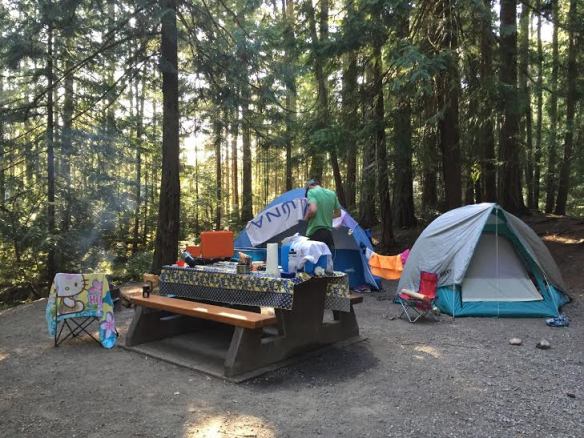













 3. What does a typical week of workouts with momthletes look like?
3. What does a typical week of workouts with momthletes look like? 4. In your experience what are the biggest challenges moms have for fitting exercise into their lives?
4. In your experience what are the biggest challenges moms have for fitting exercise into their lives?



